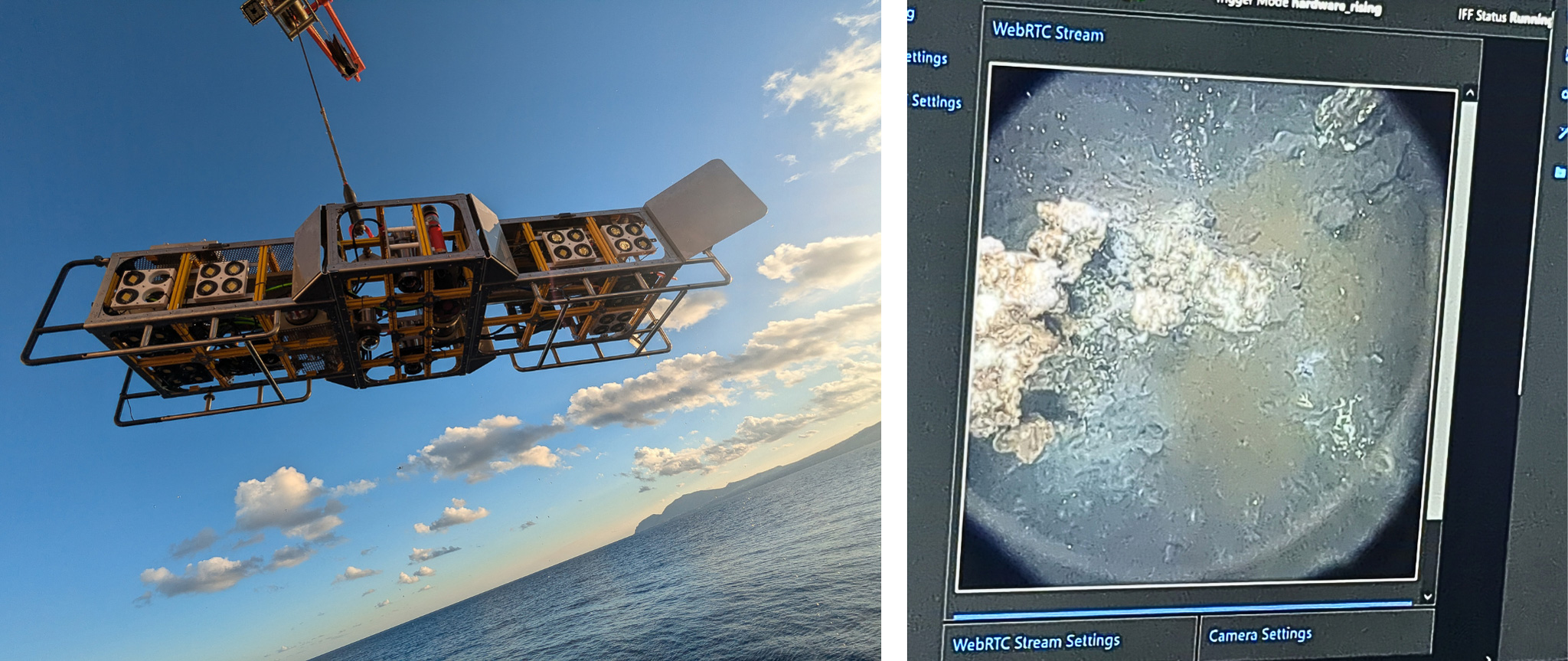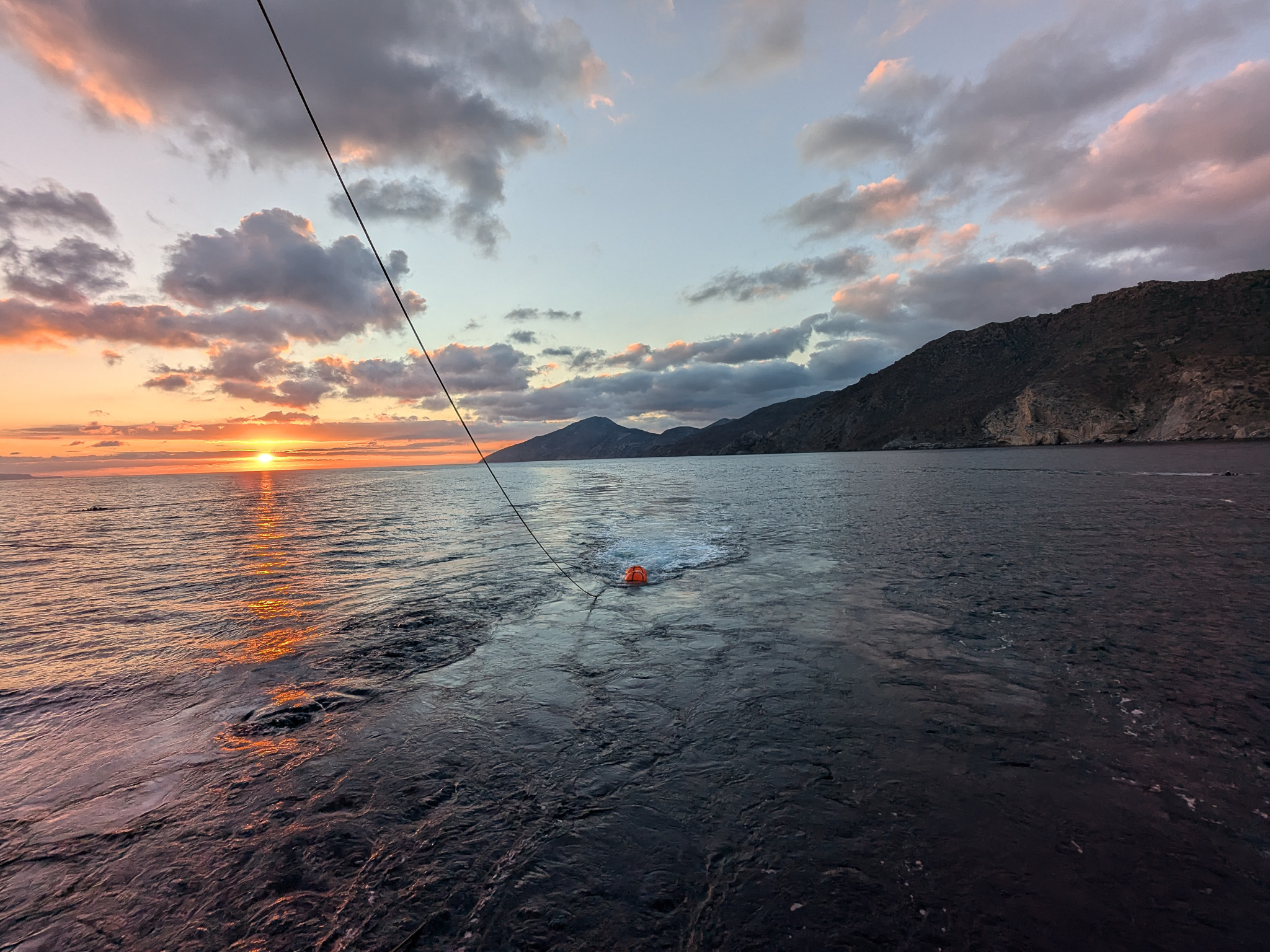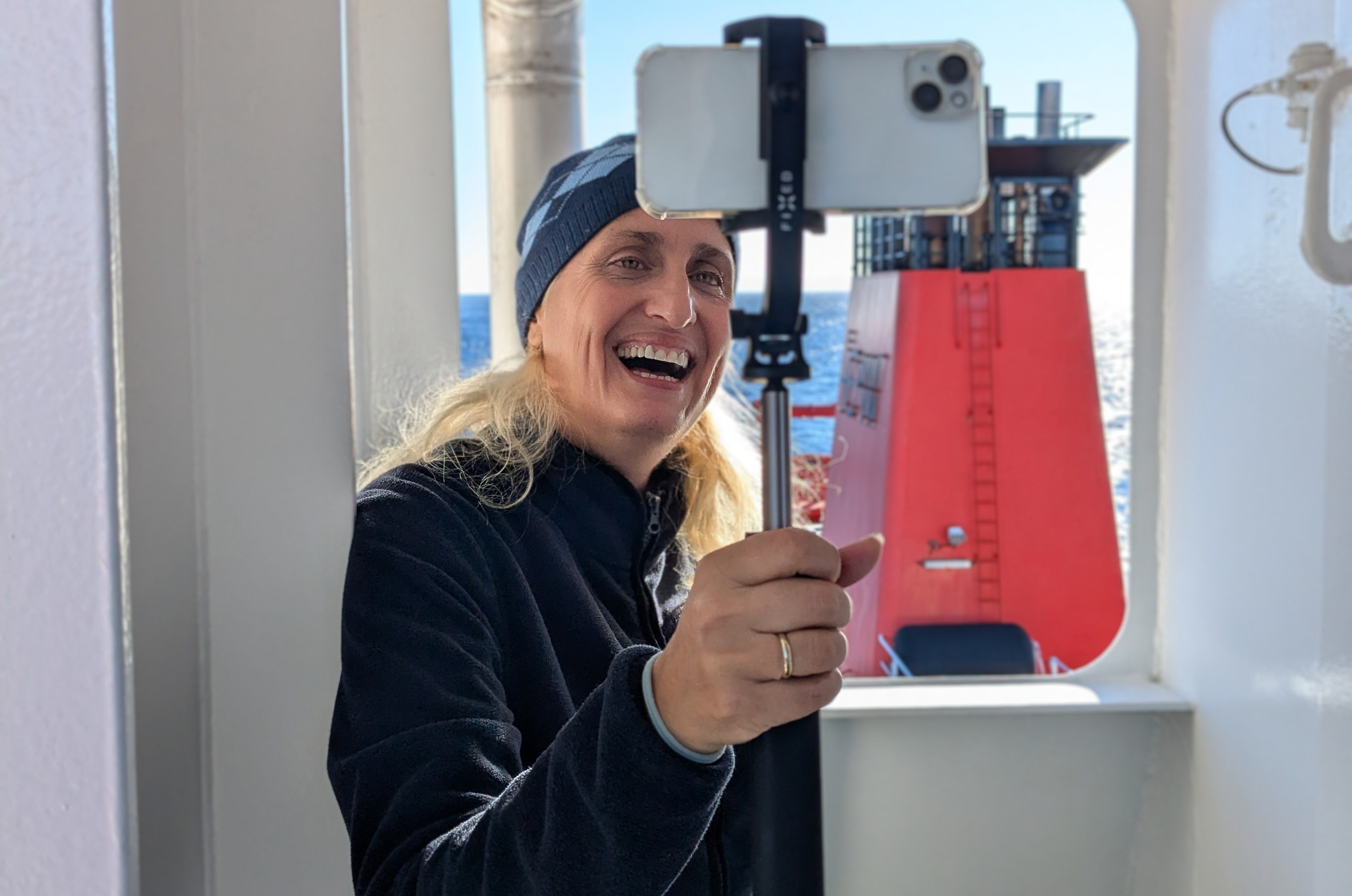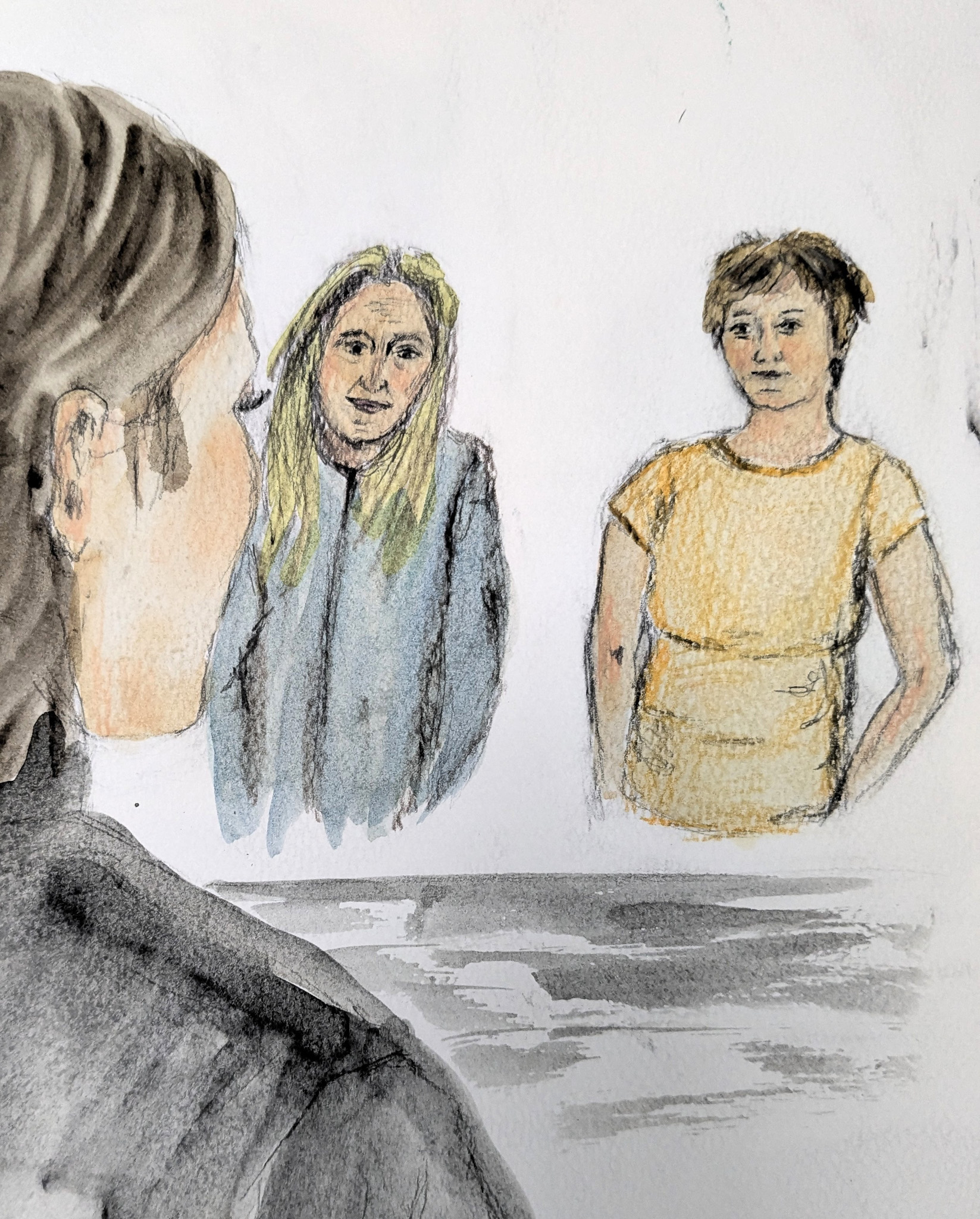The Maria S. Merian glides through the caldera of Santorini, framed by the island’s iconic volcanic landscape, steep cliffs, and whitewashed houses. While this breathtaking scenery captures the imagination, it also serves as a central area of research for the MULTI-MAREX project.
In the caldera, the new MOLA Landers (MOLA stands for Modular Ocean Lander Architecture) are being tested. These compact and highly specialized measurement systems collect data such as temperature and pressure from the seabed. Smaller and more portable than the previously deployed ocean-bottom seismometers, the MOLA Landers also feature an innovative capability: they can communicate with one another autonomously.
The MOMO video sled (MOMO stands for Modular Mobility) was also deployed in the hydrothermal field of the Kolumbo crater. With its four high-resolution cameras and powerful LED lights, MOMO captured spectacular images of hydrothermal vents spewing mineral-rich water from the seafloor. The photogrammetric data it collects not only allow scientists to analyze the structure and dynamics of these vents but also create stunning visuals for Virtual Reality experiences, offering a rare glimpse into this hidden world.

Following the work in the caldera, the expedition moved to the waters off Amorgos, where the team is now collecting 3D seismic data. This method involves sending sound waves into the subsurface and measuring their reflections off different geological layers, helping to map the complex structures of the region. Complementing this, the multibeam echo sounder scans the seabed with sound waves to produce highly detailed maps. Together, these technologies provide a comprehensive view of the geological dynamics responsible for volcanic and tectonic activity in the Aegean.

This week also brought virtual visitors aboard the ship. During live calls, Professor Dr. Paraskevi Nomikou guided students from Santorini and Master’s students from the National & Kapodistrian University of Athens through life and research aboard the Maria S. Merian. From their island, the students could see the ship and learn first-hand about daily life onboard—from festively decorated cabins to advanced labs and complex research systems. This initiative exemplifies how science and society can connect, forming the basis for MULTI-MAREX’s planned Living Lab, a key element of the mareXtreme research mission.

Despite the intensive program, the Christmas spirit is undeniable. A Christmas tree was set up and decorated in the ship’s mess, and a lively Christmas quiz brought researchers and crew together to celebrate the week’s achievements.

As the Aegean glimmers under the winter sun, anticipation builds for the upcoming festive days—and the next exciting week of science and exploration. But more on that next time.
📸 Find more updates and insights from the expedition on the mareXtreme website.
Disclaimer:
The MOLA lander and the MOMO video sled collect data during the expedition, which is also used in MULTI-MAREX. The development of the MOLA system is made possible by the Helmholtz validation project of the same name, while the development of the MOMO system is funded by various projects.
This text was previously published on the mareXtreme website.